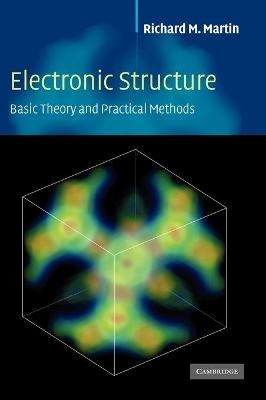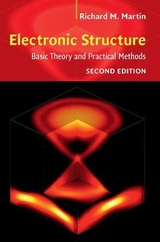
Electronic Structure
Cambridge University Press (Verlag)
978-0-521-78285-2 (ISBN)
- Titel erscheint in neuer Auflage
- Artikel merken
The study of the electronic structure of materials is at a momentous stage, with the emergence of computational methods and theoretical approaches. Many properties of materials can now be determined directly from the fundamental equations for the electrons, providing insights into critical problems in physics, chemistry, and materials science. This book provides a unified exposition of the basic theory and methods of electronic structure, together with instructive examples of practical computational methods and real-world applications. Appropriate for both graduate students and practising scientists, this book describes the approach most widely used today, density functional theory, with emphasis upon understanding the ideas, practical methods and limitations. Many references are provided to original papers, pertinent reviews, and widely available books. Included in each chapter is a short list of the most relevant references and a set of exercises that reveal salient points and challenge the reader.
Richard Martin is Professor of Physics at the University of Illinois, Urbana-Champaign. He is a recipient of the Alexander von Humboldt Senior Scientist Award, and is a fellow of the American Physical Society (APS) and the American Association for the Advancement of Science. He has served on several editorial boards of the APS, including Physical Review and Physical Review Letters, and Reviews of Modern Physics where he was associate editor for condensed matter theory.
Preface; Acknowledgements; Notation; Part I. Overview and Background Topics: 1. Introduction; 2. Overview; 3. Theoretical background; 4. Periodic solids and electron bands; 5. Uniform electron gas and simple metals; Part II. Density Functional Theory: 6. Density functional theory: foundations; 7. The Kohn–Sham ansatz; 8. Functionals for exchange and correlation; 9. Solving the Kohn–Sham equations; Part III. Important Preliminaries on Atoms: 10. Electronic structure of atoms; 11. Pseudopotentials; Part IV. Determination of Electronic Structure, The Three Basic Methods: 12. Plane waves and grids: basics; 13. Plane waves and grids: full calculations; 14. Localized orbitals: tight binding; 15. Localized orbitals: full calculations; 16. Augmented functions: APW, KKR, MTO; 17. Augmented functions: linear methods; Part V. Predicting Properties of Matter from Electronic Structure – Recent Developments: 18. Quantum molecular dynamics (QMD); 19. Response functions: photons, magnons …; 20. Excitation spectra and optical properties; 21. Wannier functions; 22. Polarization, localization and Berry's phases; 23. Locality and linear scaling O (N) methods; 24. Where to find more; Appendixes; References; Index.
| Erscheint lt. Verlag | 8.4.2004 |
|---|---|
| Zusatzinfo | Worked examples or Exercises; 5 Halftones, unspecified |
| Verlagsort | Cambridge |
| Sprache | englisch |
| Maße | 180 x 255 mm |
| Gewicht | 1417 g |
| Themenwelt | Naturwissenschaften ► Chemie ► Physikalische Chemie |
| Naturwissenschaften ► Physik / Astronomie ► Atom- / Kern- / Molekularphysik | |
| Naturwissenschaften ► Physik / Astronomie ► Festkörperphysik | |
| Naturwissenschaften ► Physik / Astronomie ► Quantenphysik | |
| Technik ► Maschinenbau | |
| ISBN-10 | 0-521-78285-6 / 0521782856 |
| ISBN-13 | 978-0-521-78285-2 / 9780521782852 |
| Zustand | Neuware |
| Informationen gemäß Produktsicherheitsverordnung (GPSR) | |
| Haben Sie eine Frage zum Produkt? |
aus dem Bereich



